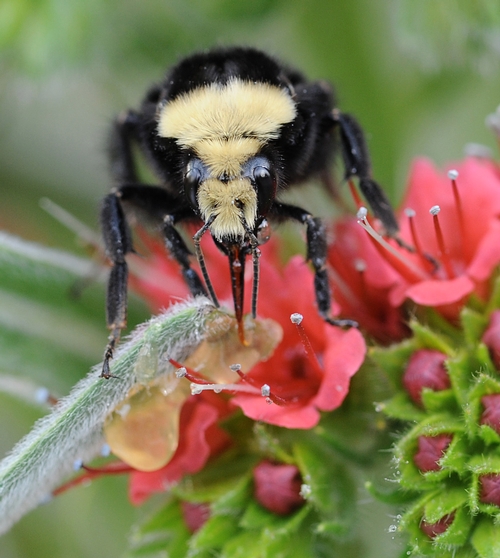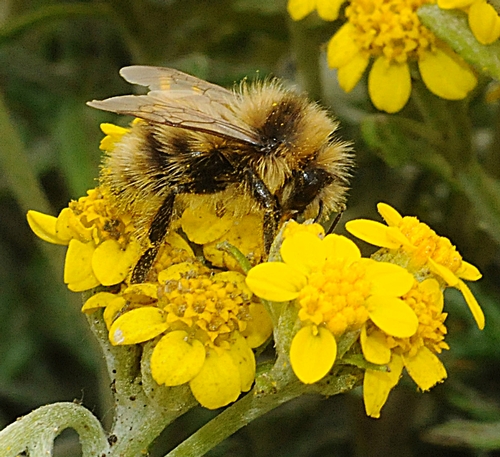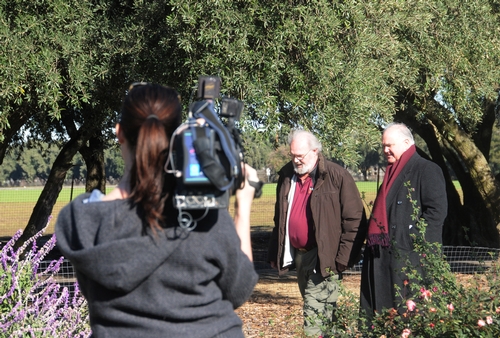Some species of bumble bees are disappearing at an alarming rate.
And that, in itself, is alarming.
A three-year study published Jan. 3 in the Proceedings of the National Academy of Sciences (PNAS) “uncovered major losses in the relative abundance of several bumble bee species and declines in their geographic range since record-keeping began in the late 1800s,” according to a University of Illinois press release.
The interdisciplinary study, led by Sydney Cameron of the Department of Entomology and Institute for Genomic Biology, University of Illinois, showed that "declining bumble bee populations have lower genetic diversity than bumble bee species with healthy populations and are more likely to be infected with Nosema bombi, an intracellular parasite known to afflict some species of bumble bees in Europe."
“The national analysis found that the relative abundances of four of the eight species analyzed have declined by as much as 96 percent and that their surveyed geographic ranges have shrunk by 23 to 87 percent,” according to the news release. “Some of these contractions have occurred in the last two decades.”
Cameron and his colleagues studied eight of the 50 species of bumble bees found in North America. Of the eight, four are significantly in trouble.
Said Cameron: "They could potentially recover; some of them might. But we only studied eight. This could be the tip of the iceberg.”
Noted bumble bee expert Robbin Thorp, emeritus professor of entomology at UC Davis, today discussed the declining bumble bee population with KTVU Fox 2 health and science editor John Fowler. The segment aired tonight on the 6 o'clock news.
Thorp and Fowler walked around the Häagen-Dazs Honey Bee Haven, a bee friendly garden planted next to the Harry H. Laidlaw Jr. Honey Bee Research Facility on Bee Biology Road. Thorp monitors the garden for bees.
The Cameron study looked at three western bumble bees: Bombus vosnesenskii (yellow-faced bumble bee), B. bifarius, and B. occidentalis.
Of those western bumble bees, only B. occidentalis is in decline “and that one only in the western part of its range,” Thorp told us.
“Although the study treated B. pensylvanicus as the eastern species in decline, the researchers did not consider its very close western relative, B. sonorus, which used to be very common here and the rest of the Central Valley, but has virtually disappeared here since about 2003,” Thorp said.
"Both these species are doing well from the southern USA down into Mexico, however. This is a curious reversal of what one would expect if global warming might be a cause.”
Bumble bees, commercially reared to pollinate greenhouse tomatoes, peppers and strawberries, pollinate about 15 percent of our food crops, valued at $3 billion, Thorp said.
Thorp has been tracking the now critically imperiled Franklin's bumble bee (Bombus franklini) since 1998. "It has the most restricted distribution range of any bumble bee in North America and possibly the world. Its range is about 190 miles north to south and 70 miles east to west in a narrow stretch between southern Oregon and northern California between the coast and Sierra-Cascade range,” he said.
Its known distribution includes Jackson, Douglas and Josephine counties in Oregon and Siskiyou and Trinity counties in California. It lives at elevations ranging from 540 feet in the north to 6800 feet in the south.
The decline, disappearance and possible demise of Franklin’s bumble bee, is closely linked to the widespread decline of native pollinators in North America, Thorp said, and should concern all facets of society. “The loss of a native pollinator could strike a devastating blow to the ecosystem, economy and food supply.”
Attached Images:

Yellow-Faced Bumble Bee

Bombus Bifarius

News Report